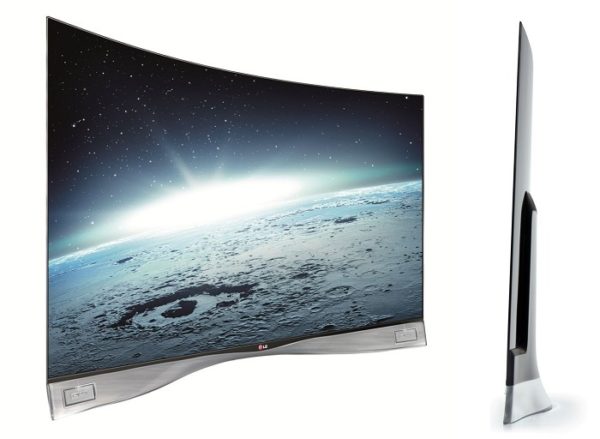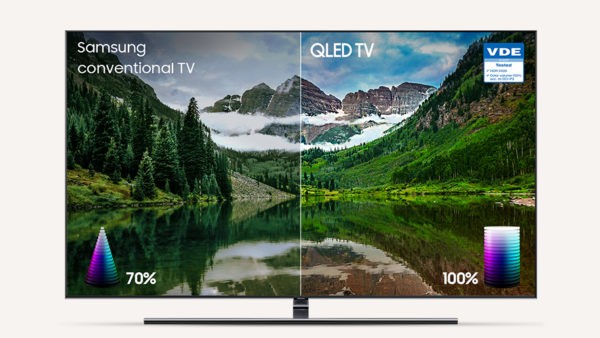The QLED and OLED technologies are profoundly different, but both are the most popular when buying a new top of the range TV. It is therefore important to know these two technologies thoroughly and analyze both the advantages and disadvantages, to make the purchase as conscious as possible. Let’s see, therefore, what are the differences between QLED and OLED technology, and which one should be purchased.
QLED vs OLED: how do they work?
Before comparing the two technologies, it is good to understand how they work.
- OLED: technology that allows you to create color displays with the ability to emit their own light. In fact, the light is emitted autonomously by the individual organic diodes without, therefore, a backlight system. In this way, thanks to the autonomous and total shutdown of the diodes, you will get perfect blacks.
- QLED: technology based on semiconductor nanocrystals (quantum dots) which, positioned between the panel and the backlight system, offer purer colors than other types of screens. This technology supports large and flexible screens, which should not be consumed like OLEDs.
QLED vs OLED: the differences
Once the two technologies have been analyzed, and how they work, we can proceed with the comparison to decree a possible winner.

Screen and colors
Speaking of dimensions, it is easy to guess that OLED TVs (being without backlight) are much thinner than QLED ones. In fact, the QLED technology is an updated version of the LED one, which means that, while being innovative, it maintains roughly the same thickness. On the other hand, QLED technology offers users a wider choice. This is because the minimum size of a QLED TV is 43″, unlike the 55″ of an OLED TV. The size of TV influences the price also, obviously. In fact, televisions equipped with OLED technology have a much higher price than QLED televisions.

On brightness, the QLEDs have an extra gear due to the origin of LED technology, which guarantees excellent brightness. For this reason, a QLED panel also reaches 1300 nits, unlike OLED TVs that reach a maximum of 700 nits. If QLED technology boasts higher brightness, OLEDs on blacks are unbeatable. In fact, a peculiar feature of OLED panels is absolute black, generated by the total turning off of the pixels. From this also follows a greater contrast and an impeccable quality of the colors. On the contrary, in a QLED TV the presence of the backlight does not allow the presence of absolute blacks, but of less pure blacks and with a not really excellent contrast. Fortunately, in some cases, local dimming is used to overcome this drawback, a feature that allows you to adjust certain areas of the screen. But, as it is easy to guess, it is not enough to keep up with the absolute black of an OLED panel.
Viewing angle and response times
Taking into consideration the viewing angle, the LED/QLED panels have some difficulties, as the backlight is not able to cover the whole screen. The consequence is that the peripheral areas of the screen will be less illuminated and offer a lower quality image than the central areas. This must not be said for OLED panels, as they act homogeneously on the whole screen.
Response times should also be considered, which represent the time it takes for pixels to turn on/off. The shorter the response times, the more the quality of the reproduced images increases. Here OLED technology is clearly ahead of the competition, once again thanks to its “autonomous” pixels.
Is there a winner?
After this detailed comparison, a winner should be declared. The truth is that there is no real one, but it all depends on your needs and what demands you have from a top of the range TV.
Taking into consideration OLED technology:
- Thinner televisions
- Overall better video quality
- Absolute better black
- Unrivalled response times
- Rather high prices
- Lower brightness
- Restricted range of choice
On the other hand if we refer t
o the QLED technology:
- Thicker televisions
- Less pure blacks
- Slower response times
- Greater brightness
- Affordable prices
- Wide range of choice
In conclusion, it would seem that OLED technology has more advantages and therefore is the best choice to make. But as we saw earlier, the QLED technology is much more accessible, and although the benefits are slightly lower, still offers a great visual experience at a price content.
These are the differences between OLED and QLED to be taken into consideration before purchasing a new TV.
